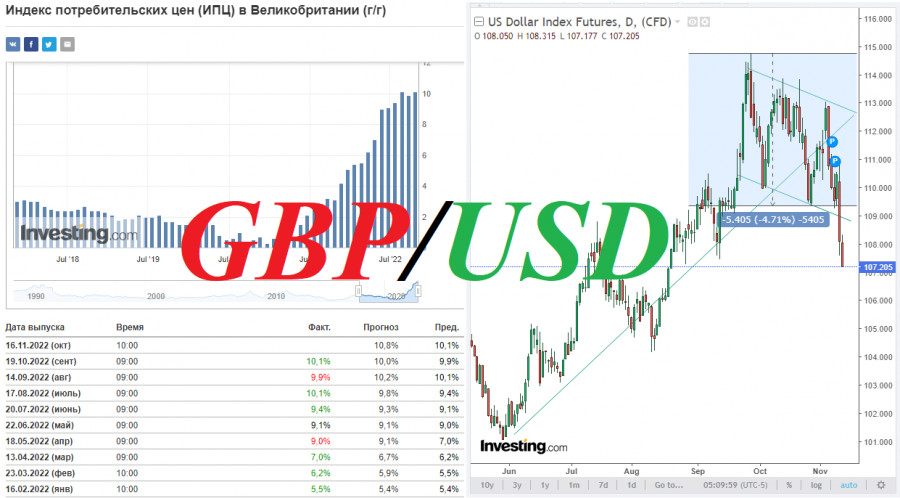
One of the important events of the economic calendar next week will be the hearing of the inflation report in the Treasury Committee of the British Parliament. The head of the Bank of England and the bank's Monetary Policy Committee will give explanations on the current economic policy, the situation and the prospects for the economy. At this time, the volatility in the pound quotes can rise sharply. The tough rhetoric of the representatives of the Bank of England regarding the containment of inflation, implying an increase in interest rates in the UK, may provoke a strengthening of the pound.

The data published on October 19 recorded an increase in the CPI in September from 9.9% to 10.1% YoY, although the monthly value remained at 0.5%. The core inflation rate (excluding volatile food and energy products) rose to 6.5% YoY compared with 6.3% in August, exceeding forecasts of 6.4%.
These data increased the likelihood of further rate hikes by the Bank of England (the bank's meeting will take place on December 15). At its November 3 meeting, BoE raised its key rate sharply, by 75 bps, the biggest move since the 1980s, to 3%. However, in their comments, the leaders of the UK central bank made it clear that this was perhaps the only extraordinary decision.
Next week (Wednesday), the Office for National Statistics will publish the latest inflation data. Its new growth is expected (up to 10.3% year on year). Rising inflation and its high level will put pressure on the BoE to tighten its monetary policy, which in normal economic conditions, is estimated as a positive factor for the national currency.
Many economists believe that the next action of the Bank of England will be to raise interest rates by 0.50% and then by 0.25%. The combination of a protracted economic recession in the UK with the "blurred" position of the central bank regarding the need for aggressive containment of inflation creates the preconditions for a weakening pound. Data released today showed that UK GDP contracted by -0.2% in Q3 (compared with an increase of +0.2% in Q2) against expectations of a stronger contraction (by -0.5% ). Although this is less negative data, economists are already giving a forecast for the weakening of the GBP/USD pair to 1.0600 by the end of the first quarter of next year.

In the meantime, taking advantage of the weakening dollar, the GBP/USD is growing. As of writing, the pair is trading near 1.1720 in a short-term bull market. In general, the downward dynamics of the pair remains, still in the zone of a long-term bearish market, which, despite the upward correction below the resistance levels 1.1885, 1.2110, makes short positions still preferable. A breakdown of the nearest local support level at 1.1640 may trigger a resumption of GBP/USD decline.